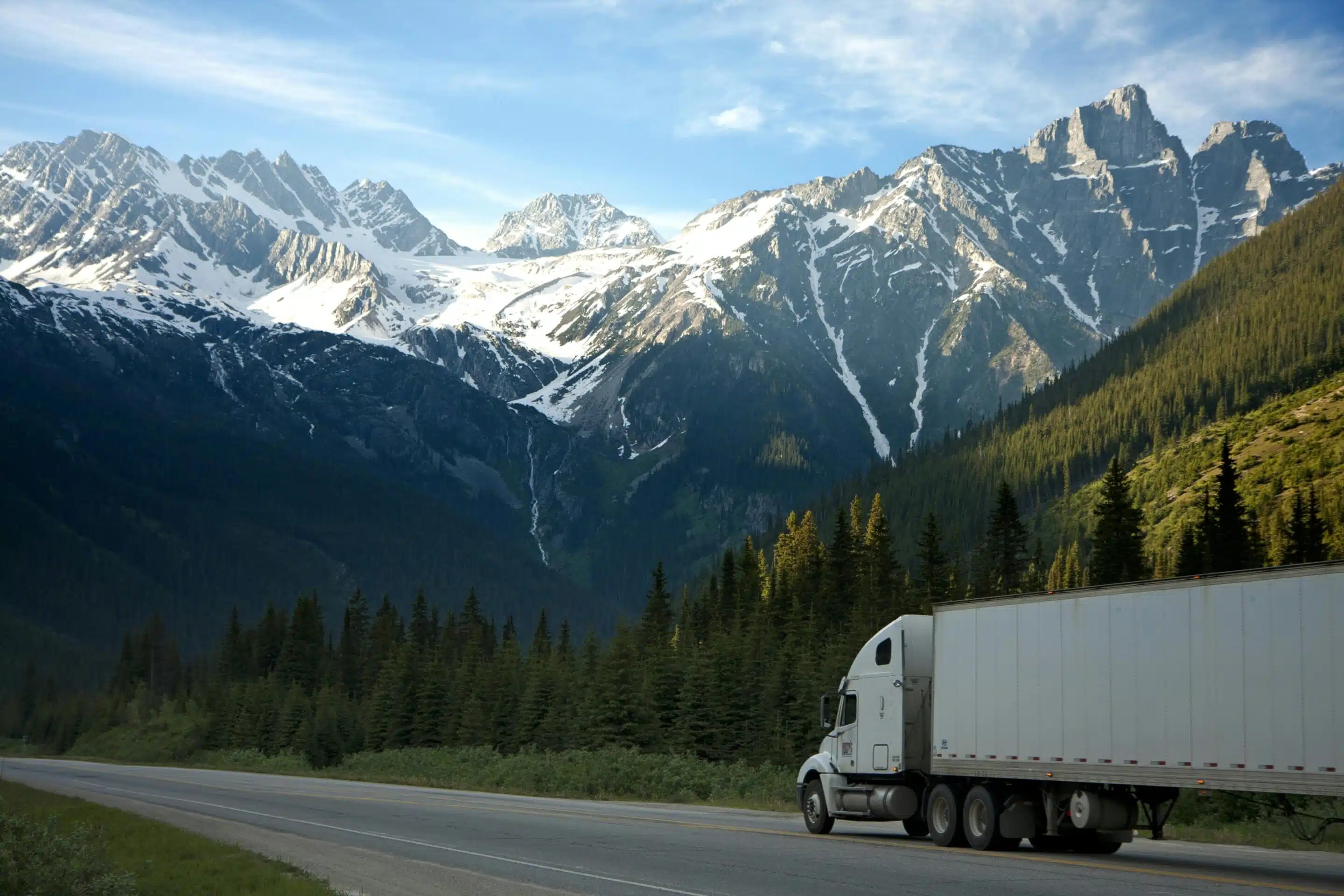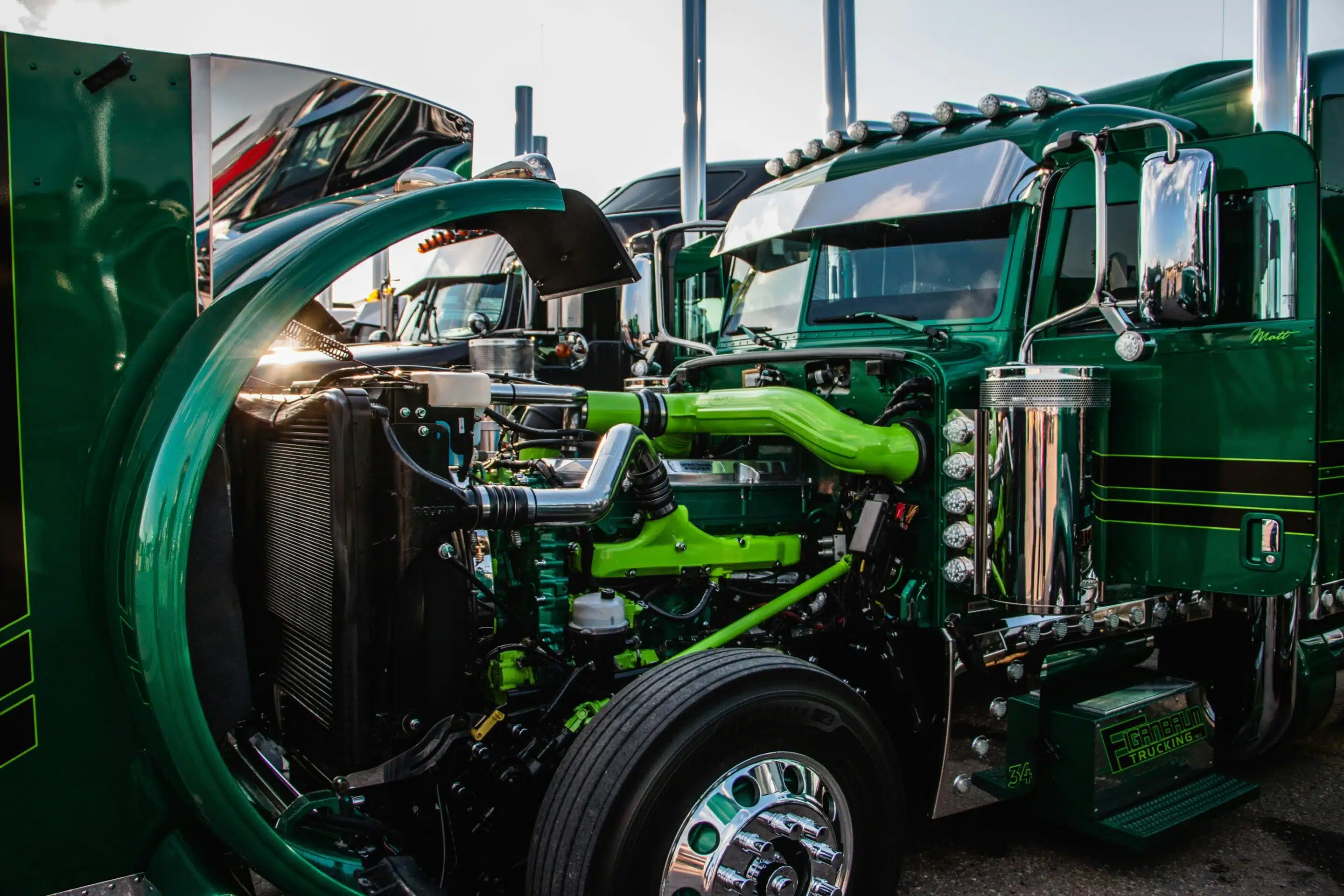CDL News: Trucking Industry Updates, Key Trends and Compliance Challenges in 2025

The trucking industry in 2025 is experiencing rapid change, shaped by advancements in autonomous technology, stricter emissions regulations, infrastructure challenges, and a persistent driver shortage. Companies must navigate these shifts while ensuring compliance with evolving federal and state regulations, including the EPA’s review of greenhouse gas emissions standards for heavy-duty vehicles.
Significant events and updates in the trucking industry occurred in March 2025, including important meetings, acquisitions, and legislative developments that have impacted operations and regulations.
At Focused Compliance Group, we are committed to keeping industry professionals informed and prepared. This article explores the most significant developments in trucking this year and their implications for fleet owners, drivers, and logistics professionals.
Trucking Industry Outlook
The trucking industry is expected to continue evolving in 2025, with a strong focus on safety, security, and sustainability. As the backbone of the US economy, the industry is closely tied to economic and market conditions, and it is anticipated to face several challenges throughout the remainder of the year. Key trends that defined the freight and transportation landscape in 2024 include modest resilience in freight demand, inventory adjustments, softened consumer spending, and persistent overcapacity.
Technological advancements are at the forefront of this evolution. The adoption of electric and autonomous vehicles is on the rise, driven by the need for more efficient and environmentally friendly transportation solutions. Companies are also exploring alternative fuels to reduce their carbon footprint and comply with the Trump administration’s greenhouse gas emissions standards, which are set to have a significant impact on the industry.
In terms of safety and security, the industry is seeing an increase in the use of advanced safety features, such as automatic emergency braking and lane departure warning systems. These technologies are designed to enhance driver safety and reduce the risk of accidents. Additionally, security measures like GPS tracking and cargo insurance are becoming more prevalent to prevent theft and loss.
Overall, the trucking industry is expected to continue playing a vital role in the US economy. By evolving and adapting to changing market conditions and regulations, companies can ensure they remain competitive and resilient in a dynamic environment.
The Expansion of Autonomous Trucks and Regulatory Uncertainty
Autonomous trucks are no longer just a concept—they are now being actively deployed in key freight corridors. Companies such as Aurora Innovation and Waymo Via have launched driverless freight routes, particularly between Dallas and Houston. The U.S. Postal Service is moving ahead with a transportation streamlining initiative aimed at improving network efficiency.
Recent Developments in Self-Driving Trucks

• Aurora Innovation plans to have fully autonomous freight trucks carrying commercial loads on Texas highways without human drivers by the end of 2025.
• Daimler Truck and Torc Robotics are expanding autonomous truck testing in high-traffic regions.
• Regulatory frameworks vary significantly, with 39 states allowing autonomous trucking under specific guidelines, while federal regulations are still under development.
What This Means for Trucking Companies
• The ongoing driver shortage, projected to exceed 160,000 by 2030, makes autonomous trucks a potential supplement rather than a replacement for human drivers.
• Regulatory uncertainty remains a challenge, requiring companies to stay informed about state-by-state compliance.
• Safety concerns continue to be a primary issue, emphasizing the need for rigorous testing and emergency response protocols.
2. Emissions Regulations and the Transition to Electric Trucks
The push for zero-emission trucking is intensifying, but it presents significant challenges. Federal and state governments are implementing stricter emissions regulations, putting pressure on trucking companies to invest in electric and alternative-fuel vehicles.
New Emissions Regulations
• The Environmental Protection Agency’s Clean Truck Plan will introduce stricter emissions limits for commercial trucks in 2027, requiring manufacturers to develop cleaner-burning engines. This has raised ongoing concerns within the trucking community, especially among truckers, regarding policy changes and economic challenges.
• California’s Advanced Clean Fleets rule mandates that large trucking fleets begin phasing out diesel trucks in 2025 and transition to electric or hydrogen-powered vehicles by 2035.
• New York’s Zero-Emission Truck Mandate, initially set for 2025, may be delayed until 2027 due to concerns over charging infrastructure and high costs.
Challenges of the Electric Transition
• The infrastructure for charging electric trucks remains inadequate, with most charging stations concentrated in California and a few other states.
• The cost of electric trucks is two to three times higher than that of diesel trucks, making it difficult for smaller operators to transition.
• Battery limitations restrict the range of electric trucks to approximately 200-300 miles, making them impractical for long-haul routes.
How Trucking Companies Can Prepare
• Plan fleet transitions early to take advantage of available state and federal tax credits.
• Explore alternative fuels such as hydrogen fuel cell trucks for long-haul routes where charging remains a challenge.
• Stay informed on compliance deadlines, as different states have varying timelines for zero-emission mandates.
3. Infrastructure Challenges: Congestion and Repairs Impacting Freight Movement
Congested highways, aging infrastructure, and ongoing construction projects continue to cause delays and increase costs for trucking companies.
Major Freight Bottlenecks in 2025
• Houston’s Interstate 45 at Interstate 69 remains one of the most congested freight corridors in the U.S., affecting shipments to and from Texas ports.
• Chicago’s Interstate 290 and Interstate 90 interchange is a major problem for rail-truck intermodal freight movement.
• The Los Angeles Interstate 710 corridor is experiencing significant congestion due to port traffic and ongoing expansion projects.
Government Infrastructure Investments
• The federal government’s $1.2 trillion infrastructure plan is funding repairs and expansions on key freight routes.
• The Texas Department of Transportation is investing in projects to improve traffic flow on Interstate 45.
• Port expansions on both the East and West Coasts aim to reduce shipping delays and improve intermodal freight efficiency.

How Trucking Companies Can Minimize Delays
• Use real-time traffic management software to reroute trucks around major congestion points.
• Stay updated on road closures and construction schedules that could impact delivery timelines.
• Communicate potential delays with clients to manage expectations and maintain strong business relationships.
4. The Driver Shortage Continues to Worsen
Despite efforts to recruit new drivers, the shortage remains one of the biggest challenges facing the trucking industry.
Current State of the Driver Shortage
• The industry is projected to be short more than 160,000 drivers by 2030, leading to increased freight costs and supply chain disruptions.
• The average age of a truck driver is now 48, with fewer young people entering the profession.
• Long wait times for CDL licensing and training are slowing workforce growth.
Efforts to Address the Shortage
• Companies are offering higher pay and more flexible schedules to attract new drivers.
• Some states are expanding CDL training programs to reduce licensing backlogs.
• The industry is working to recruit more women and minorities to diversify the workforce.
How Fleets Can Adapt
• Improve working conditions by offering better hours, safer rest stops, and increased home time.
• Implement driver retention programs that include mentorship and career growth opportunities.
• Utilize automation for administrative and operational tasks to reduce drivers’ workload.
Safety and Security Measures
The trucking industry is unwavering in its commitment to safety and security, with companies taking proactive steps to protect their drivers and cargo. Advanced safety features are becoming standard in commercial trucks, including automatic emergency braking and lane departure warning systems. These technologies are designed to prevent accidents and enhance overall road safety.
Security measures are also a top priority. Companies are increasingly utilizing GPS tracking and cargo insurance to safeguard against theft and loss. Regular maintenance and inspections are conducted to ensure that vehicles are in optimal working condition, reducing the risk of mechanical failures that could lead to accidents.
Driver training programs are another critical component of the industry’s safety strategy. These programs ensure that truck drivers are well-versed in safety protocols and procedures, helping to minimize the risk of accidents. Additionally, the industry is addressing the issue of driver fatigue, a major safety concern, by implementing fatigue management programs. These programs include measures such as driver scheduling and routing to ensure that drivers are well-rested and alert while on the road.
Cargo theft remains a significant security concern, and companies are taking steps to mitigate this risk. By implementing security measures such as GPS tracking and cargo insurance, companies can better protect their assets and ensure the safe delivery of goods.
Overall, the trucking industry is dedicated to maintaining high standards of safety and security. By investing in advanced technologies and comprehensive training programs, companies can protect their drivers and cargo, ensuring the continued success and reliability of the industry.
Postal Service and Delivery: Impacts on the Trucking Industry
The trucking industry is intricately linked with the postal service and delivery sectors, making any changes in postal service regulations and policies highly impactful. One of the most significant developments in recent years is the Trump administration’s proposal to transfer the US Postal Service to the Commerce Department. This move is part of a broader effort to reform the Postal Service and enhance its efficiency.
For the trucking industry, which is a critical component of the supply chain, these changes could have a ripple effect. The industry relies heavily on the postal service for the transportation of goods, and any shifts in postal service operations can influence freight demand, delivery schedules, and overall logistics.
The American Trucking Associations (ATA) is actively monitoring these developments. As a key organization representing the interests of the trucking industry, the ATA is working to ensure that the industry’s concerns are heard and addressed. Trucking companies are also preparing for potential changes by staying informed and adapting their operations to maintain efficiency and compliance.
Tariffs and Trade Wars: Navigating Economic Challenges
The trucking industry is currently navigating significant economic challenges due to ongoing trade wars and tariffs. The Trump administration’s tariffs on imports have led to retaliatory measures from other countries, creating a complex and uncertain economic landscape for trucking companies. On March 13, significant announcements or events, such as President Trump’s threat to impose tariffs, have impacted the trucking industry.
These tariffs have increased costs for trucking companies, disrupted supply chains, and added layers of complexity to freight movement. The industry is working diligently to mitigate these impacts by exploring alternative routes and markets, reducing reliance on imports, and finding innovative solutions to maintain operational efficiency.
The American Trucking Associations (ATA) is playing a crucial role in addressing these challenges. By working closely with the Trump administration, the ATA aims to find solutions that will alleviate the economic burden on the trucking industry. Despite the economic uncertainty, the trucking industry remains resilient. Companies are adapting to the changing market conditions, ensuring their survival and success in a competitive environment.
In conclusion, the trucking industry is facing a dynamic and challenging landscape in 2025. From regulatory changes and economic pressures to technological advancements and infrastructure issues, trucking companies must stay informed and adaptable. By leveraging the support of organizations like the ATA and investing in innovative solutions, the industry can continue to thrive and meet the demands of a rapidly evolving market.
Preparing for the Road Ahead in 2025
The trucking industry is undergoing significant changes, from new autonomous technology and emissions regulations to infrastructure improvements and workforce challenges. Trucking companies that stay informed and adapt to these shifts will be better positioned for success.

At Focused Compliance Group, we help businesses navigate regulatory compliance, drug and alcohol testing, and workforce training to ensure they remain compliant and competitive.
For more insights and assistance with compliance requirements, contact us today to keep your fleet prepared for the future.
